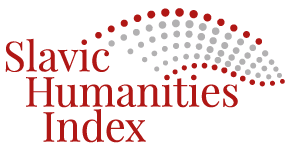The Population of Tbilisi as Perceived by Foreign Travellers in the Nineteenth Century
DOI:
https://doi.org/10.61671/hos.7.2024.8274Keywords:
Tbilisi, European travellers, ethno religious composition, Georgians, Armenians, Muslims, GermansAbstract
Tbilisi, the capital of Georgia, has long been a cultural and political crossroads between Europe and Asia. Following the establishment of Russian Empire control over Georgia in 1801, Tbilisi underwent a significant transformation in its political function. In this context, the information provided by Europeans regarding the ethno-religious composition of the population of Tbilisi, as observed during their visits to the city in the nineteenth century, is of interest. In order to investigate the question that has been posed, a variety of sources were consulted, including materials from the archives of the Viennese castle (France), information from travellers' notes and the Parisian press. A comprehensive comparative analysis was conducted to elucidate the ethno-religious composition, social affiliation, customary practices, and occupational distributions within the Tbilisi population. The group of European travellers comprised a diverse cohort of educated individuals.
A review of the available evidence indicates that the majority of Tbilisi's population was composed of Armenians and Georgians, with relatively small groups of Muslims, including Tatars and Persians. In the early years of the nineteenth century, Russian military officials and soldiers began to settle in Tbilisi. In the 1920s, Armenians and Germans began to emigrate, prompted by a complex array of factors including military, political, religious, and economic considerations. The accounts of travellers are predominantly constituted by information gathered in a variety of settings, including streets, markets, caravans, and receptions held by local authorities. This material illustrates how the heterogeneous population of Tbilisi, comprising Ossetians, Lezgins, Persians, Circassians, Dagestanis, French, German colonists and numerous other groups, in addition to the multiplicity of languages and costumes, has contributed to the city's distinctive cultural tapestry.
While the data collected from travellers is not entirely devoid of subjectivity, this material serves as an invaluable resource for research. In light of the aforementioned evidence, it can be posted that Tbilisi assumed a significant multicultural role throughout the nineteenth century. This was evidenced by the coexistence of representatives of diverse nationalities and religions, which was a defining feature of the city.



































